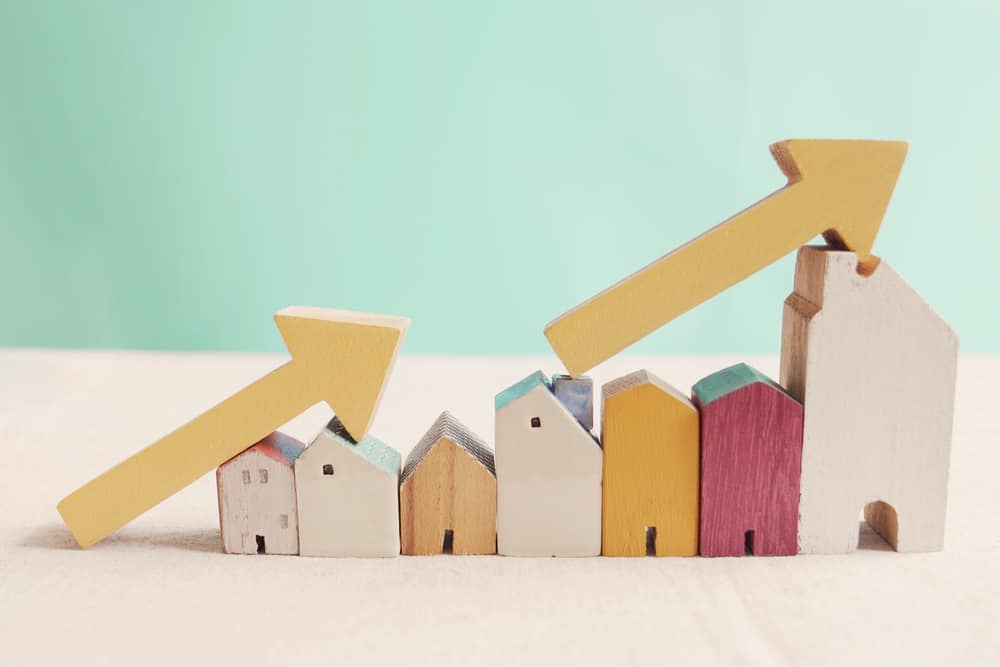
The average house price in November was £252,687, not seasonally adjusted, compared with £250,311 in October.
Robert Gardner, chief economist at Nationwide, said: “Annual house price growth remained strong in November at 10.0%, marginally higher than the 9.9% recorded in October.
“Prices rose 0.9% in month-on-month terms, after taking account of seasonal effects.
“As a result, house prices are now almost 15% above the level prevailing in March last year when the pandemic struck the UK.
“There have been some signs of cooling in housing market activity in recent months.
“For example, the number of housing transactions were down almost 30% year-on-year in October.
“But this was almost inevitable, given the expiry of the stamp duty holiday at the end of September, which gave buyers a strong incentive to bring forward their purchase to avoid additional tax.
“Indeed, activity has been extremely buoyant in 2021.
“The number of housing transactions so far this year has already exceeded the number recorded in 2020 with two months still to go and is actually tracking close to the number seen at the same stage in 2007, before the global financial crisis struck.
“Moreover, underlying activity appears to be holding up well.
“The number of mortgages approved for house purchases in October was still running above the 2019 monthly average.
“Early indications also suggest that labour market conditions remain robust, despite the furlough scheme finishing at the end of September.
“If this is maintained, housing market conditions may remain fairly buoyant in the coming months, especially since the market has momentum and there is scope for ongoing shifts in housing preferences, as a result of the pandemic, to continue to support activity.
“But the outlook remains uncertain, where a number of factors suggest the pace of activity may slow.
“It is unclear what impact the new ‘Omicron’ variant will have on the wider economy.
“While consumer confidence stabilised in November, sentiment remains well below the levels seen during the summer, partly as a result of a sharp increase in the cost of living.
“Moreover, inflation is set to rise further, probably towards 5% in the coming quarters.
“Even if economic conditions continue to improve, rising interest rates may exert a cooling influence on the market.
“Indeed, house price growth has been outpacing income growth by a significant margin and, as a result, housing affordability is already less favourable than was the case before the pandemic struck.”
Mark Harris, chief executive of mortgage broker SPF Private Clients, said: “Few would have predicted at the outbreak of the pandemic that property prices would now be 15% higher than they were then.
“The stamp duty holiday, low interest rates, a lack of stock and a strong desire to move created the perfect storm, pushing up property prices.
“‘The intensity seen in the housing market earlier in the year has thankfully eased, as it was not sustainable.
“But while the froth has gone, there is still plenty of activity as this will be the busiest year for the housing market since 2007 in terms of number of transactions.
“The noise around interest rate rises is likely to get louder as we head into the new year but for now it’s a mixed bag when it comes to mortgage pricing, with the cost of sub-80% loan-to-value mortgages still rising while higher LTV products are seeing some reductions.
“Those borrowing at 95% LTV will find that some mortgages are now cheaper than they were pre-pandemic as lenders are more relaxed about higher LTV borrowing.”
Tomer Aboody, director of property lender MT Finance, said: “An extremely strong November with double-digit price growth has yet again demonstrated the strength in the market over the past year.
“The market has been helped and fuelled by government support over the past 15 to 16 months, in particular the stamp duty holiday and furlough.
“Transaction levels, while cooling, are still high, virtually hitting the peak of 2007.
“The future is slightly uncertain with the ever-changing global picture thanks to COVID and the possibility of interest rate rises, which will slow down growth.
“But we are still experiencing a low interest environment which makes purchasers more bullish, confident and keen to buy.”



